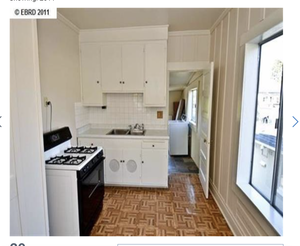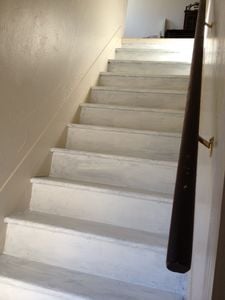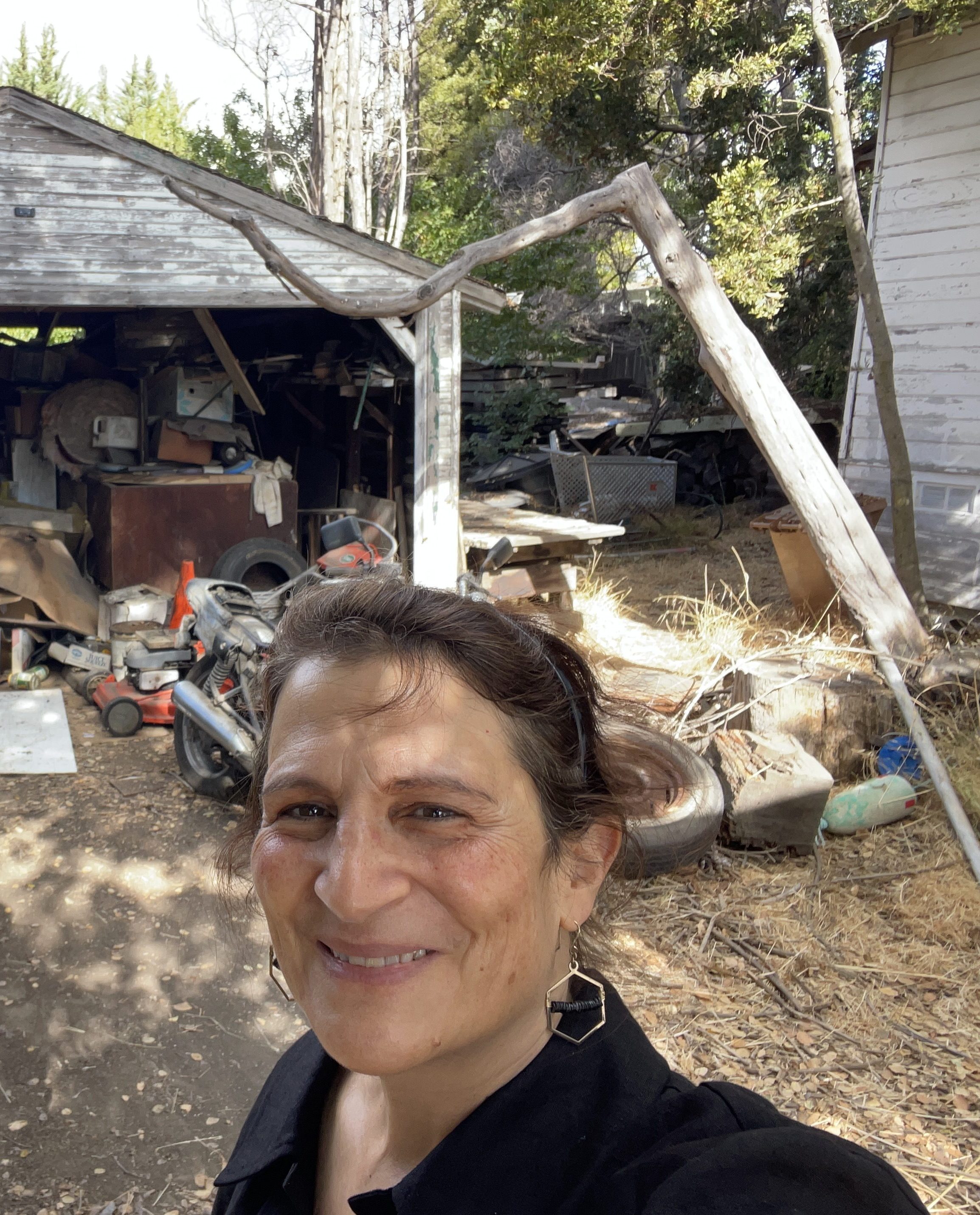Let’s talk about that house. You know the one. Maybe it showed up in your search or on “Zillow Gone Wild” or it’s a mysterious house you’ve always been curious about as you passed by.

This hideous kitchen could have turned me off from buying the “ugliest house in the best neighborhood.” But it didn’t, and I won!
It’s in one of those popular neighborhoods like Rockridge in Oakland that you adore—tree-lined streets, great local coffee shop, neighbors who still wave hello. But the house itself? It is “awaiting your personal vision.” Maybe the bedroom is only accessible by walking through another bedroom. Or the floors have a charming (read: noticeable) slope, which has your friend who’s “very into HGTV” raising an eyebrow.
Turns out that all describes the house in Rockridge I bought under asking!
To top it off, the appraisal came back lower than you’d hoped because of these so-called *functionally obsolescent* features. So what now?
Cash Is King—Especially When the House Is Quirky and Functionally Obsolescent
If you’re in the position to buy a home with cash, you’re already sidestepping one of the biggest hurdles of buying a less-than-perfect property: financing limitations.
Because of habitability laws (when it comes to FHA and VA loans), and because they want to know they’re making a safe investment, mortgage lenders typically require a property to meet certain livability and safety standards before they’ll sign off. That means homes with unconventional layouts, outdated systems (especially old knob and tube wiring, worn roofs, and galvanized plumbing), or even sloping floors might be a no-go for traditional financing.
That’s because when it comes to aging systems and infrastructure, water leaks and fires are the #1 things a lender and an insurance company wants to avoid. Sloping floors might be a symptom of foundation issues. Then again, maybe they were built that way! Converted porches were made to slope for rain runoff. Owners of old generally don’t straighten out porch floors before closing them as a room. That job might lie to you. $$$ That can signal a buying opportunity!
Which leads to the benefits of a cash purchase. You call the shots. You take the risk. You can buy the house with the oddly-placed toilet or the “open concept” kitchen that’s *literally* open to the backyard because a wall fell down in 1994. You’re in control—and that’s a powerful thing when it comes to buying a property that may have major appreciation potential in the future.

It’s important before remodeling to work with contractors who know the laws. For example doing certain permitted construction might require changing something else such as if the old windows are higher than building code currently requires. If you cut into the wall to expand them you may need to lower them closer to the ground for safety in case of fire. This steep stairway is another example…which is the one in This Old House that I bought!
Functionally Obsolescent Today, Hot Property Tomorrow
Buying a home that’s a little offbeat gives you the chance to build equity the old-fashioned way: by rolling up your sleeves and making smart improvements.
Maybe that walk-through bedroom becomes part of a beautiful primary suite. Or you add a hallway to the next bedroom. (Note: Before using valuable space as a hallway, figure out, if you are selling, if there are potential cash buyers who won’t care if there aren’t hallways separating the bedrooms!)
Maybe those sloping floors are easily fixed with some subfloor improvements and / or concrete leveler, with the help of an experienced, licensed building contractor. Once those fixes are made, guess what? You’ve not only improved the home’s livability—you’ve likely increased its market value.
If you do think you might sell someday, it’s worth brushing up on the kinds of repairs that matter most when it comes to resale and financing. Fannie Mae has a handy guide outlining Physical Deficiencies That Affect Safety, Soundness, or Structural Integrity. If your home has any of those red-flag issues, addressing them will help you appeal to a wider pool of buyers down the line (and possibly avoid headaches if they need a loan to buy your house. Of course, in 2025 there is talk of Fannie Mae changing…and if so be sure to check the latest rules.
The bottom line is this: if you find a home in a location you love, don’t be afraid to consider properties that are less than picture-perfect—especially if you’re buying with cash. Today’s fixer home could be tomorrow’s equity-building, charm-filled haven.
As long as the property meets today’s standards for basic habitability and doesn’t have any scary structural issues — which you can have inspected by licensed home inspectors and structural engineers — buying a home with quirks can be a strategic and rewarding move.
How can I buy a house with cash if I don’t have cash ???
In recent years, many options for getting cash to make competitive house offers have come about.
- Stock brokers may have a line of credit program for their high net worth clients.
- Mortgage lenders have bridge loan programs that can value a house you own and the one you want to buy to give you cash to buy the new house which you pay off when selling the old house.
- Then there are hard money lenders, if you are flipping. The caveat is they are actually giving you a loan based on the value of the updated house which they assume you will sell, unless you plan to pay them back some other way.
- “Non-QM” loans are based on other assets you have. That means non-qualified mortgage. Self-employed paycheck-poor home buyers can get these loans at higher-than-conventional interest rates. The investors behind these loans get that not everyone has constant income. (Take a real estate agent, for exmple!) They are willing to risk your savings and assets make you a good candidate for a loan.
All of the different ways to get cash and loans cost something. If you need to make a strong offer, paying that extra can be worth it to get the fixer home of your dreams.
In conclusion, my passion is helping home buyers find gold in outdated or fixer properties! Opportunity often hides in the homes that are priced too high for flippers and are too shabby for the most affluent buyers.
Ready to find a perfect fixer in a great neighborhood, like I did for myself in Rockridge and in a Maine vacation rental? I’m here to help you spot it—and see it for all it could become with your sweat equity and some house hacking.



